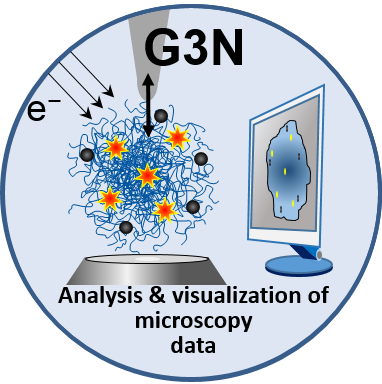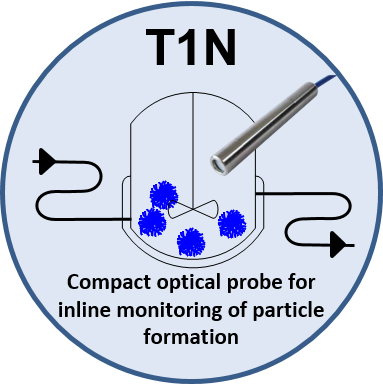Project Area G
Development of microgel analysis techniques
The structural complexity of the systems and the dynamic response of microgels to their environment requires the SFB to employ a large variety of techniques to investigate microgels with respect to their chemical composition as well as with respect to physico-chemical properties on different length and time scales. While the participating groups provide a wealth of techniques, there is still the need for further developments in particular in two fields: (i) the in-line monitoring of microgel production processes and (ii) the quantification of high-resolution microscopy data of microgels.
The new project G3N focusses on the development of computational techniques for a quantitative analysis and visualization for responsive microgels. While low-level processing, single molecule detection and molecule/point clustering is already possible, no methods for a comprehensive quantitative description of microgels are available to date. G3N focusses on higher-level data analysis and correlation of the data from different experimental techniques, which requires dedicated methods for data analysis, visualization and statistical treatment of point clouds. Generative models will make it possible to e.g. interpolate intermediate microgel conformations, in order to make predictions that can be tested experimentally.
The new transfer project T1N will extend the development of new in-line monitoring techniques using static light scattering (SLS) in collaboration with the company Hellma GmbH & Co KG (Müllheim). In principle, evidence of their functionality has been delivered, but several more steps are needed to reach a similar technology readiness level as the inline DLS probe head from funding period one. With the help of a strong partner from industry, T1N will be able to develop a compact and robust industrial grade particle analyzer that can be used inside and outside the SFB. This technology will enable faster particle size measurements and open up new application fields. Due to miniaturization with optical path lengths in the sample on the order of only several hundred micrometres, higher particle concentrations compared to cuvette-based offline instruments can be analyzed without dilution, which is of special importance for the inline-capability of the technology.


